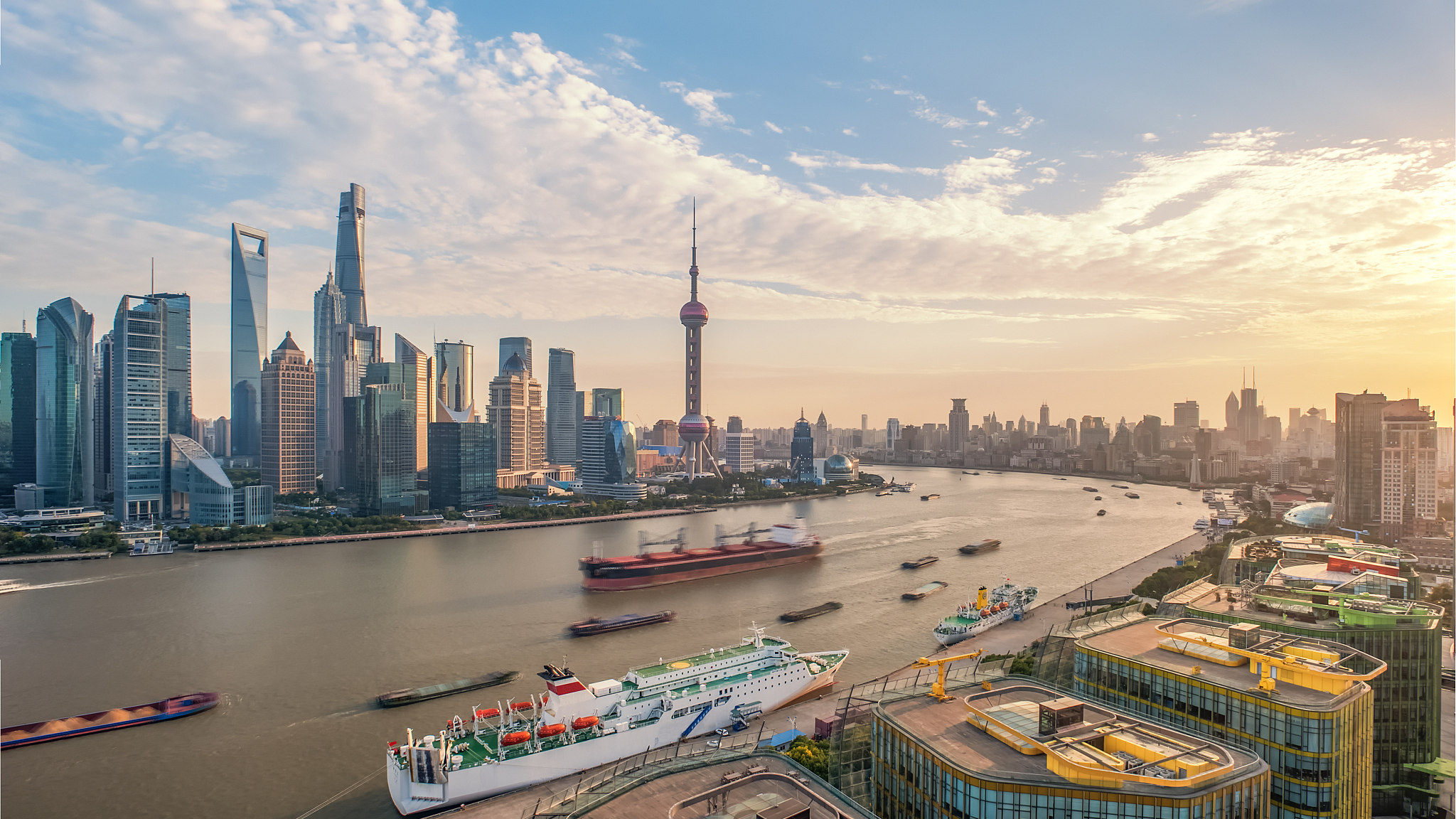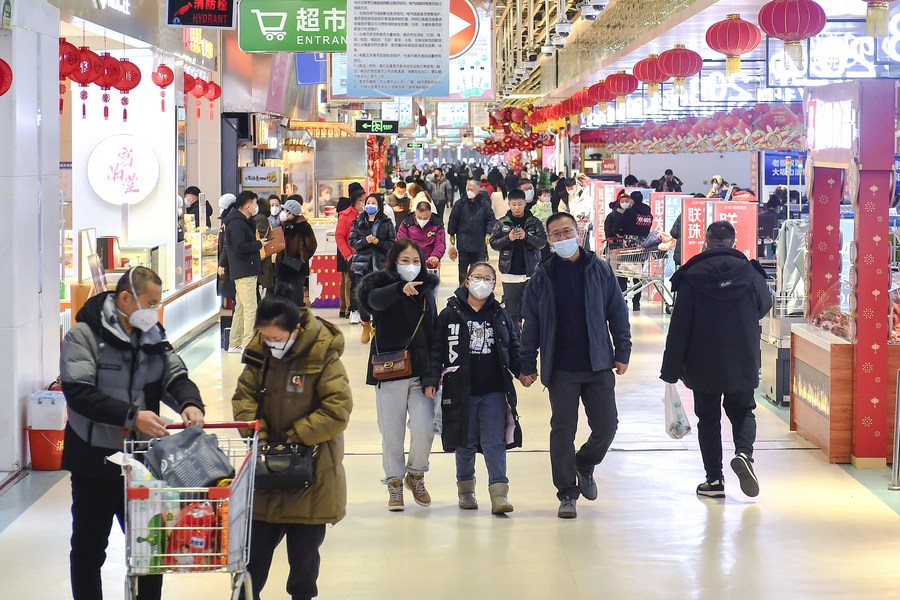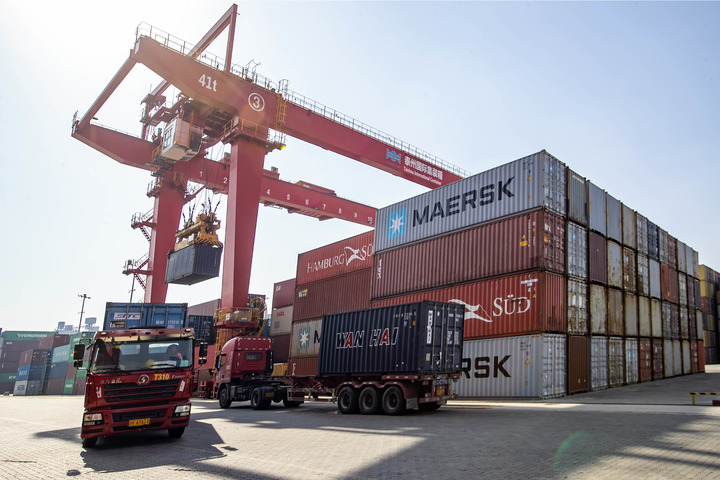
A view of the bund at sunrise in east China's Shanghai. /CFP
A view of the bund at sunrise in east China's Shanghai. /CFP
Editor's note: 2023 is the first full year for implementing the guiding principles of the 20th National Congress of the Communist Party of China. Ahead of this year's Two Sessions, China's key annual political meetings, CGTN presents "China Marches On," a special series that takes an in-depth look at the country's endeavors in advancing Chinese modernization.
As the Chinese leadership gathers at the Two Sessions, the most important event on the country's political calendar, an important task at hand remains to be the establishment of a new development pattern that takes the domestic market as the mainstay while letting domestic and foreign markets reinforce each other.
On January 31, Chinese President Xi Jinping called for accelerating the establishment of a new development pattern, stressing that efforts must be made to coordinate the expansion of domestic demand and the deepening of supply-side structural reforms. He made the remarks during the second group study session of the Political Bureau of the 20th Central Committee of the Communist Party of China (CPC).
"We must resolutely implement the outline of the strategic plan for expanding domestic demand, form a complete domestic demand system as soon as possible, and strive to expand consumption demand supported by income, investment demand with reasonable returns, and financial demand with principal and debt constraints," he said.
But how far has China come in its journey to boost people's incomes and improve livelihood? And how does the relationship between the domestic and foreign markets play out?
Booming incomes and consumption
In 2022, China's per capita disposable income increased to 36,883 yuan (about $5,487), up by 5 percent year on year in nominal terms, official data shows.
The growth of Chinese residents' income is consistent with the overall expansion of the country's economy. From 2020 to 2022, its economy posted an annual average growth of 4.5 percent, outpacing the global average of 1.8 percent and surpassing that of other major economies.
The World Bank data shows that China's contribution to global economic growth during the 2013-2021 period averaged 38.6 percent, exceeding the combined contribution of the Group of Seven countries.
The country's gross domestic product (GDP) hit an all-time high of 121.02 trillion yuan (about $17.95 trillion) in 2022, according to the National Bureau of Statistics (NBS).
High-tech manufacturing and equipment manufacturing sectors also showed a growing momentum, with the output values increasing by 7.4 percent and 5.6 percent, respectively.

People shop at a mall in Changchun, Jilin Province, northeast China, January 23, 2023. /Xinhua
People shop at a mall in Changchun, Jilin Province, northeast China, January 23, 2023. /Xinhua
Meanwhile, an increasing number of people are moving into the middle-income class, surpassing 400 million in 2022 from 100 million a decade ago.
The rise in income, along with a growing middle-income class, is expanding the consumption potential of the Chinese market. In 2022, consumption took up 32.8 percent of the GDP expansion, according to the NBS.
A better business environment
The report to the 20th CPC National Congress called for "providing an enabling environment for private enterprises" and "supporting the development of micro, small and medium-sized enterprises."
The government also released a new guideline in 2022 to lessen the burden on small businesses, protect the legitimate rights of market entities, and improve services catering to the needs of businesses.
"China makes efforts in activating the vitality of economic entities, promoting the construction of a national unified market and bolstering the platform economy," Bai Rangrang, associate professor of the Department of Applied Economics at the School of Management of Fudan University, told CGTN.
Over the past few years, China has refined the systems underpinning the market economy, such as those for property rights protection, market access, fair competition and social credit.
In 2019, China issued the "Regulation on Optimizing Business Environment," the first official document that clarified the relationship between the protection of intellectual property rights and the business environment.
The regulation protects domestic investors and market entities, while allowing foreign individuals and corporations to get patents or trademarks from Chinese IP administrative offices if they meet statutory requirements.
High-standard opening-up
Calling for "high-standard opening-up," the report to the 20th CPC National Congress says that China should "steadily expand institutional opening-up with regard to rules, regulations, management and standards."
So far, China has signed 19 free trade agreements with 26 countries and regions. The trade volume between China and its free trade partners takes up around 35 percent of the country's total foreign trade.
In 2022, China's total trade in goods reached 42.07 trillion yuan (about $6.21 trillion), up 7.7 percent from 2021, ranking first globally for a sixth consecutive year, official data shows.

Containers are being moved at the international container terminal of Taizhou Port in Taizhou, Jiangsu Province, east China, January 17, 2023. /Xinhua
Containers are being moved at the international container terminal of Taizhou Port in Taizhou, Jiangsu Province, east China, January 17, 2023. /Xinhua
Since the implementation of the Foreign Investment Law in 2020, China has taken a range of measures to encourage foreign investment and promote opening-up at a higher level, easing market access for trade in services and increasing the proportion of trade in goods with zero tariffs.
According to the Ministry of Commerce, foreign direct investment in the Chinese mainland, in actual use, expanded 6.3 percent year on year to 1.23 trillion yuan in 2022.
China introduced its first negative list for foreign investment in 2017, which delineates industries that are prohibited or restricted to private investment by companies. The latest version released in 2021 reduced the number of restrictive measures from 33 to 31.
"Over the past decade, China has made full use of the domestic and overseas markets and resources therein to expand its foreign trade and economic cooperation … and create a new paradigm of opening-up to the outside world," said Chen Jian'an, vice chairman of the China Council for the Promotion of International Trade.